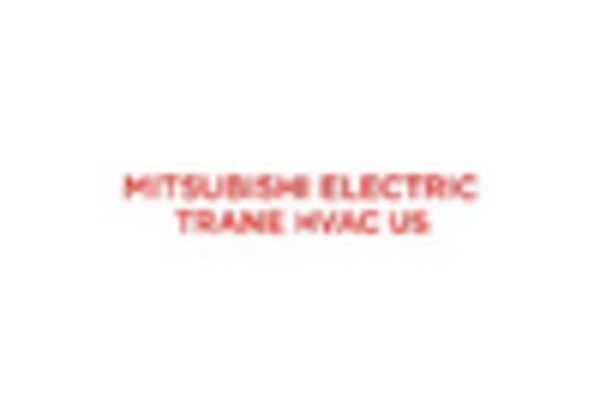Emergence of 5G Technology
The Discrete Semiconductor Market is witnessing a transformative impact from the emergence of 5G technology. The rollout of 5G networks necessitates advanced semiconductor solutions to support higher data rates and improved connectivity. Discrete semiconductors are integral to the infrastructure required for 5G, including base stations and network equipment. In 2025, the telecommunications sector is likely to drive a substantial portion of the discrete semiconductor market, with projections indicating a growth rate of approximately 12 percent. This growth reflects the increasing demand for faster and more reliable communication systems, which are essential for various applications, including IoT devices and smart cities. As 5G technology continues to expand, the role of discrete semiconductors in enabling this connectivity becomes increasingly critical.
Growth in Industrial Automation
The Discrete Semiconductor Market is poised for growth due to the rising trend of industrial automation. As industries adopt automation technologies to enhance productivity and efficiency, the demand for discrete semiconductors is likely to increase. These components are crucial for various applications, including motor drives, sensors, and control systems. In 2025, the industrial automation sector is anticipated to contribute significantly to the discrete semiconductor market, with estimates suggesting a growth rate of approximately 7 percent. This trend reflects the broader shift towards smart manufacturing and Industry 4.0, where discrete semiconductors serve as the backbone of automated systems, facilitating real-time data processing and operational efficiency.
Surge in Consumer Electronics Demand
The Discrete Semiconductor Market is experiencing a notable surge in demand driven by the increasing consumption of consumer electronics. As households and individuals continue to adopt smart devices, the need for efficient and reliable semiconductors becomes paramount. In 2025, the consumer electronics sector is projected to account for a substantial share of the discrete semiconductor market, with estimates suggesting a growth rate of approximately 8 percent annually. This trend indicates a robust market for discrete semiconductors, as they are integral to the functionality of devices such as smartphones, tablets, and smart home appliances. The ongoing innovation in consumer electronics, coupled with the rising disposable income of consumers, further fuels this demand, positioning the discrete semiconductor market as a critical component in the electronics supply chain.
Advancements in Automotive Technology
The Discrete Semiconductor Market is being propelled by advancements in automotive technology, particularly with the rise of electric and autonomous vehicles. Discrete semiconductors are essential for various automotive applications, including power management, battery management systems, and advanced driver-assistance systems (ADAS). In 2025, the automotive sector is projected to account for a significant share of the discrete semiconductor market, with growth estimates around 9 percent. This increase is driven by the ongoing transition towards electric vehicles, which require sophisticated semiconductor solutions to enhance performance and safety. As automotive manufacturers continue to innovate, the demand for high-performance discrete semiconductors is expected to rise, further solidifying their role in the automotive industry.
Expansion of Renewable Energy Sources
The Discrete Semiconductor Market is significantly influenced by the expansion of renewable energy sources. As nations strive to meet sustainability goals, the integration of renewable energy technologies, such as solar and wind, necessitates advanced semiconductor solutions. Discrete semiconductors play a vital role in power conversion and management systems, which are essential for optimizing energy generation and distribution. In 2025, the renewable energy sector is expected to drive a considerable portion of the discrete semiconductor market, with projections indicating a compound annual growth rate of around 10 percent. This growth is indicative of the increasing reliance on clean energy solutions, which, in turn, enhances the demand for efficient and reliable discrete semiconductor components.













Leave a Comment